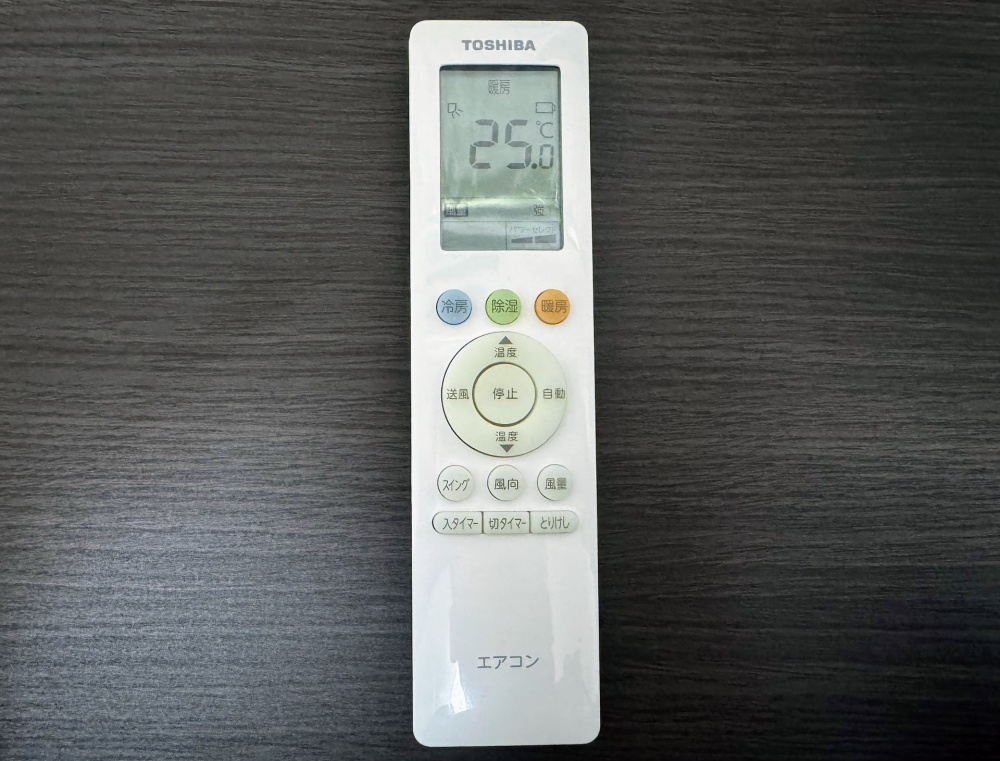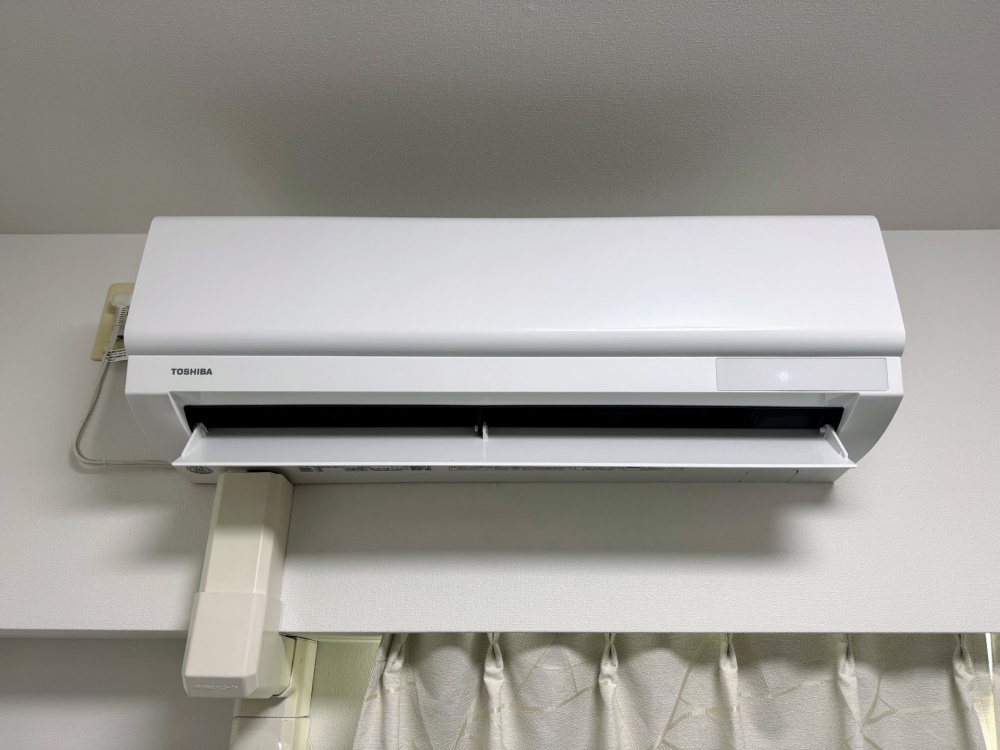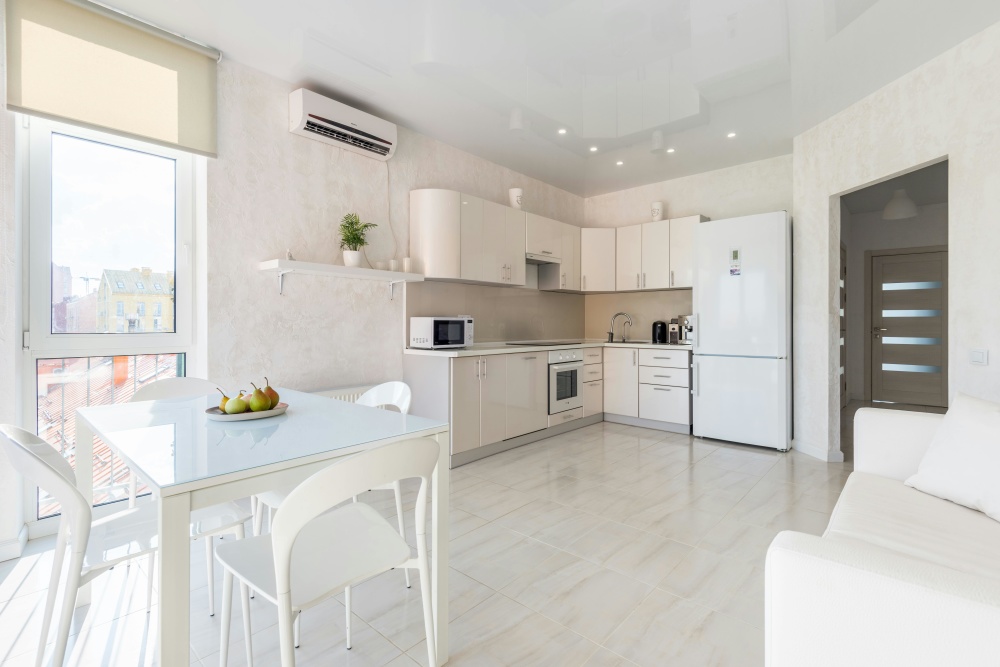Updated February 28, 2024
Air Conditioners in Japan: Everything You Need To Know
Japanese summers can get hot. Not to mention humid. Luckily, air conditioners (known locally as エアコン or “air con”) are abundant.
You'll find them everywhere in Japan, from houses and apartments to public facilities — they’re used for both heating and cooling. But air conditioning in Japan might work a bit differently from what you're used to.
In this post, I'll discuss the types of air conditioners in Japan, how they work, and how to navigate the standard air con remotes you’ll come across. I'll also explain how to keep an air con unit in good condition as a renter and what to do when it fails.
So, here’s all you need to know about air conditioners in Japan, how they differ from a system like central cooling, and what all those little icons on your air con remote mean.
Air Conditioners in Japan: Explained
In Japan, most houses and apartments are equipped with air conditioning units, which are single-room units that are comprised of two parts: an outside and an inside unit. You’ve likely seen these everywhere if you’ve ever been apartment hunting in Japan, which I have a separate post on.
These units are designed to control the climate of a single room, rather than the whole apartment/house, unlike central heating/cooling units. Because of this, it’s important to close the door of the room you’re heating or cooling to avoid high electricity bills.
If your apartment doesn’t have air conditioning, on the other hand, you’ll have to get it installed separately in each room you most frequently use.
Luckily, the installation doesn’t require as much work and planning as installing a central system. That said, the outside unit of Japanese air conditioners requires sufficient space outside of your house or on your balcony. Also, you’ll need to inform your landlord and get their permission before having the unit installed.
Before moving on to how you can operate an AC in a Japanese home, let’s see how this system differs from central heating, and if the latter is a thing here in Japan.
Is Central Heating and Cooling Used in Japan?
Yes. Central heating and cooling systems are also used in Japan, but these are mostly reserved for big public spaces like hospitals and schools.
Unlike the AC that’s common in most Japanese homes, these are huge systems that include circulating cooled/heated air through ducts throughout the whole building and are generally less energy efficient.
Perhaps a big reason why central heating or cooling systems aren’t that common in Japan is exactly this, the high costs. Combined with the fact that installing and maintaining central systems require much more work, it’s no wonder central systems aren’t too common in Japanese homes.
The Japanese Air Con Remote: Deciphering The “Rimokon”

To use the air conditioning device in your home, you’ll have to learn to use the remote controller. In case you didn’t know, these controllers are referred to as the “リモコン” or “Rimokon” in Japan.
As you may have noticed, most Rimokons in Japan come with kanji and katakana icons instead of the Latin alphabet with English words you may be accustomed to. So, if you’re a complete newbie here, even simply turning the AC on can be challenging, but I’m here to help.
For starters, here are some of the usual modes found on most standard air conditioners, which are represented with the kanji/katakana icons below:
冷房 (Reibou): Cooling mode
除湿 (Joshitsu): Dehumidifier mode
暖房 (Danbou): Heating mode
In addition to these, some modern units may offer additional modes for drying clothes and for the device to clean itself. Here’s what to look for on your Rimokon:
衣類乾燥 (Irui Kansou): Laundry drying mode
内部クリーン (Naibu Kurin): Self-cleaning mode
Finally, in addition to modes, you can adjust certain settings and fans on your device using these buttons:
温度 (Ondo): Temperature
送風 (Soufuu): Ventilator (to circulate the air inside the room)
停止 (Teishi): Stop
自動 (Jidou): Automatic
スイング (Swing): Move the fan direction up and down
風向 (Kazamuki): Wind direction
風量 (Fuuryou): Air strength
入タイマー (Iri timer): Set timer to turn on at set time
切タイマー (Kiri timer): Set timer to turn off at set time
とりけし (Torikeshi): Delete timer
This vocabulary is all you need to decipher Japan’s air conditioners, but if you want to learn more simple Japanese words and phrases, I have separate posts for simple greetings and how to say how are you as well.
How To Use A Japanese Air Conditioner

As I previously explained, the AC units in Japan are comprised of two parts: an outside unit and an inside unit. Unless there’s an issue with your device, you’ll mostly interact with the inside unit.
The AC is controlled with a remote controller, and each unit in a home has a separate remote controller you don’t want to misplace. If you’re in a furnished apartment/house or a new rental and don’t know where the remote is, chances are it’s mounted on a wall somewhere near the inside unit.
Let’s begin by turning the AC on.
On and off buttons are represented on your remote with 運転 (unten) and 停止 (teishi) respectively. Depending on the brand/model of your unit, the on and off functions might also be labeled with 切 (kiri) and 入 (iri), which also translate to on and off.
Once your unit is on, you’ll want to adjust the temperature and set the mode.
The temperature is set using the buttons with arrows pointing up and down, similar to the volume buttons on a TV remote, which can also be a plus and minus on some remotes.
Depending on your device, you can set the mode using the vocabulary I shared earlier. Your device might have a detailed controller with buttons for each mode, or you may need to select it on the screen, but the icons/words for the modes are the same.
Using the vocabulary I shared above, you’re now good to set the timer, fan speed, and fan direction to your liking.
Keeping Your AC Unit in Good Shape: Maintenance Tips
Now that you’ve got the hang of using an air conditioner unit in Japan, there are a few more tips you should know if you want to keep your AC in the best shape and prevent it from taking damage.
These tips won’t just save you money but can also help you get your deposit back in full. As a renter, if your apartment is equipped with an AC, it’s your responsibility to keep it in good condition, so read on.
Keep Your Unit Clean
If you want to make sure that your air conditioner works properly and lasts a long time, one of the most important things you can do is clean the filters frequently. Your AC may have a self-cleaning mode, but this doesn’t mean your device doesn’t need regular cleaning.
This isn’t just a maintenance tip, but a health tip as well, as changing the filter is for your own good.
Essentially, the interior unit inside the apartment has an air filter, and you need to periodically clean this to avoid breathing in dust and other airborne particles that may cause harm in the long term.
While the method varies depending on the brand and the specific unit, you can find the instructions for cleaning your AC filter in the user manual.
The frequency may change depending on how clean the room is kept or how frequently the air conditioner is used. That said, most brands recommend checking to see if your filter needs cleaning every two weeks for daily use.
Alternatively, if you want to make this process a little more convenient, you can also get a dust removal filter for your air conditioner, like this one. These filters fit inside your air conditioner, and you can replace them regularly to prevent dust from accumulating inside the unit.
An important warning here is that while these filters are commonly used, manufacturers don’t design air conditioners for the use of these dust removal filters, so, depending on your specific brand and model, attaching a dust removal filter may cause your unit to malfunction. This is why, I recommend doing your own research before you use any third-party products on your AC unit.
Don’t Forget Professional Cleaning
You may be diligent about cleaning your filters, but it’s still advisable to have your unit professionally cleaned once a year. Once every two years might also be fine; it depends on how old the device is and whether it produces any unpleasant odors.
Keep in mind that as a tenant, you have a responsibility to maintain the equipped devices in good shape, so keeping your unit clean and in good condition is vital if you’re dead set on getting that security deposit (敷金, Shiki-kin) back.
Besides, getting your unit professionally cleaned at least once a year completely eliminates the risk of mold growing inside your unit. It also provides you with proof that you’ve done all you can if the unit breaks or fails unexpectedly.
Professional cleaning of an AC unit doesn’t just involve the filter but the whole interior of the unit and takes no more than 3 hours. The process is mess-free, as they usually bring plastic covers to avoid getting your walls and furniture wet.
Unrestricted Airflow Around The Outside Unit Is Crucial
One of the most common errors foreigners who aren’t accustomed to the two-unit AC system make is not providing the outside unit with ample space.
This unit has a compressor and an exhaust inside that’s tasked with circulating and expelling air. Naturally, this unit needs enough room so that it can run efficiently.
Considering it’s quite common to store stuff on the balcony due to the small apartment sizes in Japan, it’s easy to overcrowd the space around the unit, but this can lead to restricted airflow and, therefore, energy inefficiency and high electricity costs.
So, making sure that the unit isn’t covered by anything like balcony shades, or avoiding placing furniture too close to the unit is the best practice here.

Getting The Most Out of Your AC: Tips for Efficiency
While our maintenance tips can help you keep your unit clean, if you want to get the most out of your AC, there are still a few things to know. Here’s how you can keep your bills low and use your device efficiently.
The Dehumidifier Mode (Joshitsu) Is Your Friend
If you’re coming from a dryer climate, you may not be familiar with the dehumidifier function of your AC. As humidity can be a genuine issue in Japan, especially during the hot summer days, nearly all Air Cons in Japan have a built-in “air drying” function.
Essentially, what this does is dehumidify the air without providing any sort of active cooling. That said, as the human body regulates its internal temperature by expelling sweat, and the high moisture in the air restricts perspiration, high humidity can make it feel warmer than it actually is.
Simply by decreasing the humidity, you can get a refreshing, cooling effect that doesn’t make the room too chilly and can save you from high electricity costs.
When it gets too hot, you can also use this function in combination with cooling by putting your device on “jidou” or automatic mode, which can help your AC cool the room much more efficiently.
Lastly, another function of this mode is drying your clothes indoors. If you don’t have a balcony, this can save you in a pinch as the AC effectively removes the moisture that evaporates out of your wet clothes.
There Is A Right Way To Direct The Airflow
Most air conditioners used in Japan have the option to direct the airflow however you like, and this can affect the efficiency of your device significantly.
Usually, AC units in Japan are placed up high, which results in most people directing the airflow to the ground, towards themselves. When you’re running hot, doing this feels like the logical choice to cool off immediately, but this isn’t really the case.
When you point the fan to the ground, you’re cooling the air that’s already the coolest inside the room. As hot air rises to the ceiling, the warm air you want to cool off is up high, while you’re cooling the already cool air down below, which increases the temperature difference within the room and, therefore, causes more humidity.
Instead, try pointing your fans parallel to the ground, and your room will cool off more efficiently. This can also prevent you from getting too chilly as the cold air isn’t directly blowing on you.
Japan’s Air Conditioners: The Down-Low
While the ACs in Japan may feel alienating if you’re coming from a country where central systems are popular, central heating in Japan is usually reserved for big public spaces like hospitals.
The air conditioner remote controls in Japan can be challenging for foreigners to navigate, but the handy vocabulary I shared should remedy this to some extent.
An important point to remember with individual AC units in Japan is that you need to take care of them and clean the filters regularly. Better yet, most brands recommend getting a professional cleaning once every two years at the very least.
Lastly, while the use of AC in Japan may be associated with high electricity costs, there are ways you can ensure efficient heating and reduce costs. For instance, experimenting with the dehumidifier mode is a good idea.
While this is it for Air Cons, if you want to learn more about living here, check out my posts on work/life balance and dating in Japan.
Get Job Alerts
Sign up for our newsletter to get hand-picked tech jobs in Japan – straight to your inbox.


